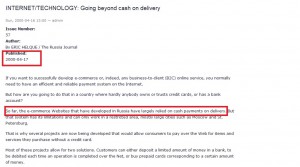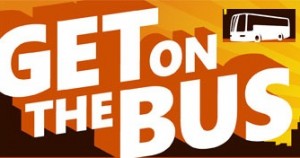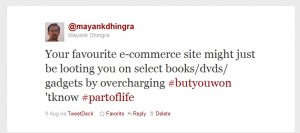COD or Cash on Delivery as we now know it wasn’t no where near its popularity today a few years back. Today quite a few people (who call us at dialabook and otherwise) know and talk about Cash upon Delivery as a concept (books milne ke baad paise de sakte hain?) if not the exact term. COD as we know has taken the entire e-commerce Industry(if we can call it) by a storm.
To give you some perspective, about 2 years back when we(@dialabook) started collecting payment for books on delivery, we had no idea about this term and no notable e-commerce site had this option. Fast forward it to today and almost all e-commerce sites(and a few others like the one below) accept(or rather promote) COD to lure more customers.
While COD as a concept has been there for ages under the name VPP (Value Payable Post) by India Post. Here’s how their website defines VPP
The value payable system is designed to meet the requirements of persons who wish to pay for articles sent to them at the time of receipt of the articles or of the bills or railway receipts relating to them, and also to meet the requirements of traders and others who wish to recover, through the agency of the Post Office the value of article supplied by them.
Govt VPP however seems to have an upper limit of Rs 5000/-, which means you can’t send goods worth more than 5k through them.
Not just VPP, some courier companies in India have been supporting COD since March 2009 at least. Though some startups like @dialabook might have been offering COD locally before, the big shift happened in April 2010 when country’s leading e-commerce player Flipkart introduced COD in April 2010 with a cash limit of Rs 2500/-, followed eight months later by Infibeam (FYI: Indiaplaza announced COD on 25th March 2010, a few days ahead of Flipkart ). It is also worth noting that some services like travelguru.com were offering COD option at least 2 years before e-commerce companies started adopting it. Seeing its success elsewhere, online travel portals yatra and Ezeego1 also launched COD in year 2011
As it turns out India isn’t the only breeding ground for COD. China,Russia etc have been a witness to the popularity of COD for long.
Going by the stats in India, as much as 60% customers of top 5 e-commerce sites in India use the option of paying by cash on delivery (COD) and many of these sites have credited COD for fueling their rapid growth. While COD for obvious reasons makes a lot of sense for Indian customers and definitely opens a new market (students etc) to e-commerce it isn’t exactly what the doc prescribed or should prescribe. Here are some of the things wrong with COD
- Cost: Nearly all courier companies charge extra for collecting cash. This cost is divided in two parts
Fixed Cost: Rs 20-150/- ; Variable Cost: 1-3% of the COD Amount. (This is mostly for high price items like mobile phones, laptops etc). If the item is priced low then the COD charges at times exceed one’s margin in the product and if the item is priced very high then the % COD charge turns out to be in hundreds or even thousands - Delay in payment: Unlike credit card transactions, COD payment generally takes 1-2 weeks or more to be transferred to your account. This bites your cash flow especially as the COD amounts start becoming huge.
- Delay in deliveries: On an average COD deliveries are delayed by 12-36 hours when compared to normal deliveries. The reasons for the same are mostly non-availability of customer or cash and many a times both. Here unlike regular deliveries the parcel can’t be dropped to a neighbors place
- Higher Returns/Cancellations: Since the customer hasn’t paid in advance, they can always cancel/refuse to take the delivery and sight reasons like I found this phone cheaper locally and have bought it from there or I have changed my mind, will buy a new laptop later
- Overheads: Collecting the cash, collating the receipts and maintaining records et all is a nightmare
With increasingly every online business offering it despite its disadvantages(to retailers) the situation might just go out of hand and turn into a death spiral (at least for some non/less funded businesses that rely heavily on their internal cash flows). Small startups are the ones that should be really concerned about these issues instead of blindly aping others and starting COD.
With time as the e-commerce market in India matures, there *might* be more trust in established mechanisms of swiping cards for paying and some people will get over the liking for COD and prefer pre-payments. But, given the case in China, Russia etc it looks like unless the e-commerce majors deliberately start demoting COD and promoting other payment options we just might replicate what’s happening elsewhere i.e 60-85% people using e-commerce sites paying by COD.
Some ways around COD
- Multiple Payment Options (at least 5-6)
- Pre-payment methods (like wallets, cards)
- Mobile banking and SMS payments
- Card on Delivery
- Giving incentives to users for choosing online payment against COD
- Alternative payment methods such as paypal etc
While COD is a good option to have in some cases its double edged sword which should be used with a lot of caution and foresight. What do you think?








